► Better than ever after updates
► Tweaked styling, cabin and chassis
► More power, no electrification
It’s fair to say the Alfa Romeo Giulia Quadrifoglio is no spring chicken, but in these times of performance PHEVs, death by touchscreen and ballooning weight, its age almost becomes a selling feature in itself. Is it enough to make it one of the best performance cars out there? Maybe.
Unlike the Mercedes-AMG C63 S E-Performance, there’s no flat-sounding four under the bonnet and thousands of drive modes to worry about. The Giulia is also hundreds of kilos lighter than the AMG and even the BMW M3, while four-wheel drive isn’t even on the menu.
Instead, there’s a Ferrari-derived 2.9-litre V6 that now produces 514bhp. This is sent exclusively to the rear wheels via an eight-speed automatic gearbox, giving 0-62mph in less than four seconds. If that power figure is a little higher than you remember, it’s because 2023 saw a mild facelift with a few crucial mechanical tweaks.
What’s new for 2024?
Starting with the outside, Turin has treated the Giulia QV (and regular versions) to ‘3+3’ headlights with adaptive full-LED matrix tech that adjusts the light beam according to what’s ahead. Also, five-hole 19-inch alloy wheels are fitted as standard, while a choice of six colours are on offer including Misano Blue, Vesuvio Grey and Montreal Green.
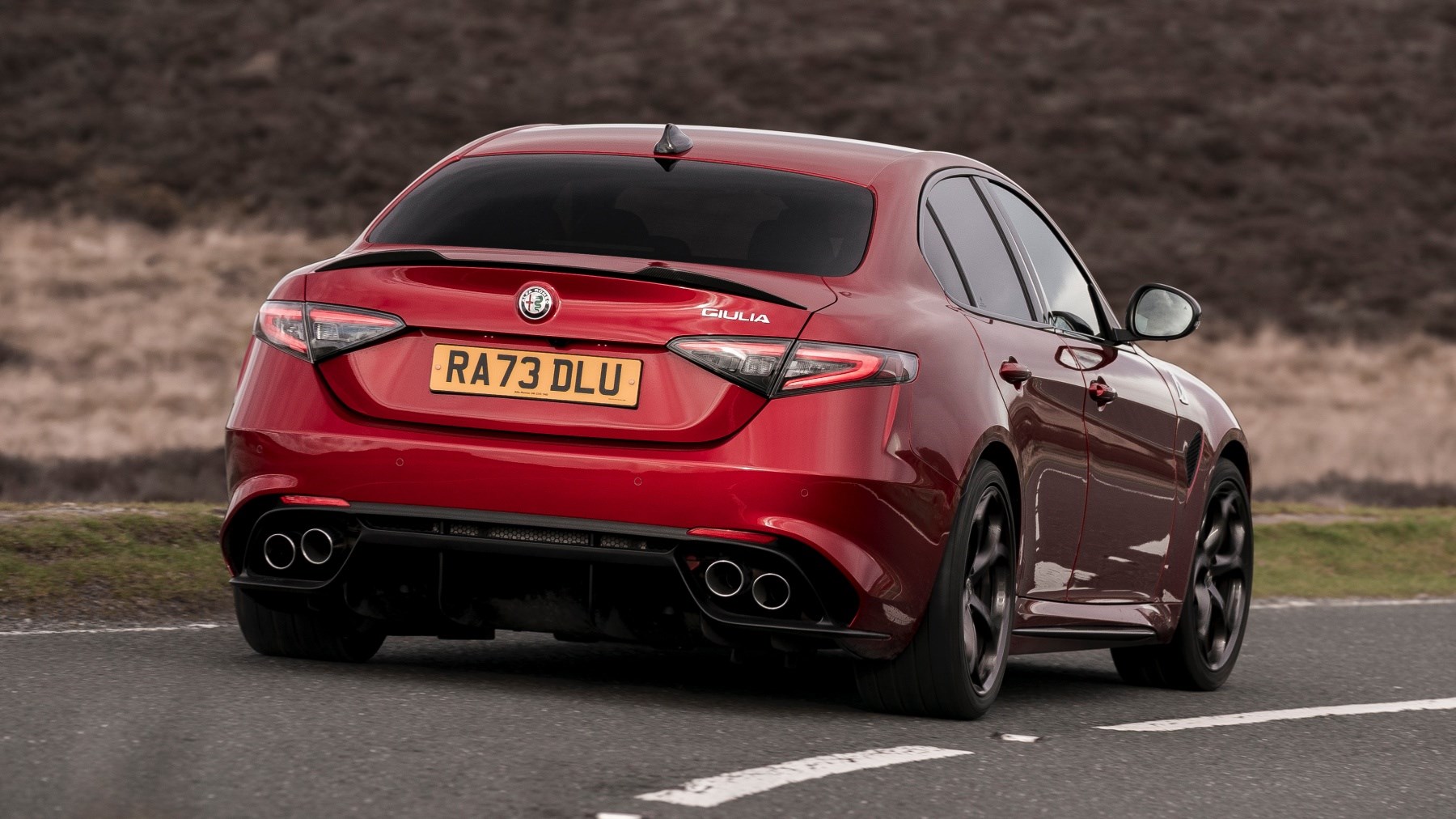
Climb in and you’ll spot a new 3D finish to the carbon and the impressive 12.3-inch digital instrument display. Admittedly, it’s nowhere near as customisable as offerings from Audi or Mercedes-AMG but it does come with a delightful Heritage dial mode and, exclusive to the QV, Race configuration.
Less obvious – until you drive the thing – is the mechanical limited-slip differential (that replaces the old electronic locking diff on previous cars) and tweaks to the rear suspension. Alfa admits that the old setup was flawed (mid-corner predictability was challenging), but claims the new diff complete with stiffer anti-roll bars should improve driveability and agility. We’ll get onto that later…
The Ferrari connection
The Giulia Quadrifoglio was engineered by a team led by ex-458 creator Philippe Krief, and its twin-turbo V6 is essentially a cut-down 488 GTB V8 that sends its power exclusively to the rear axle.
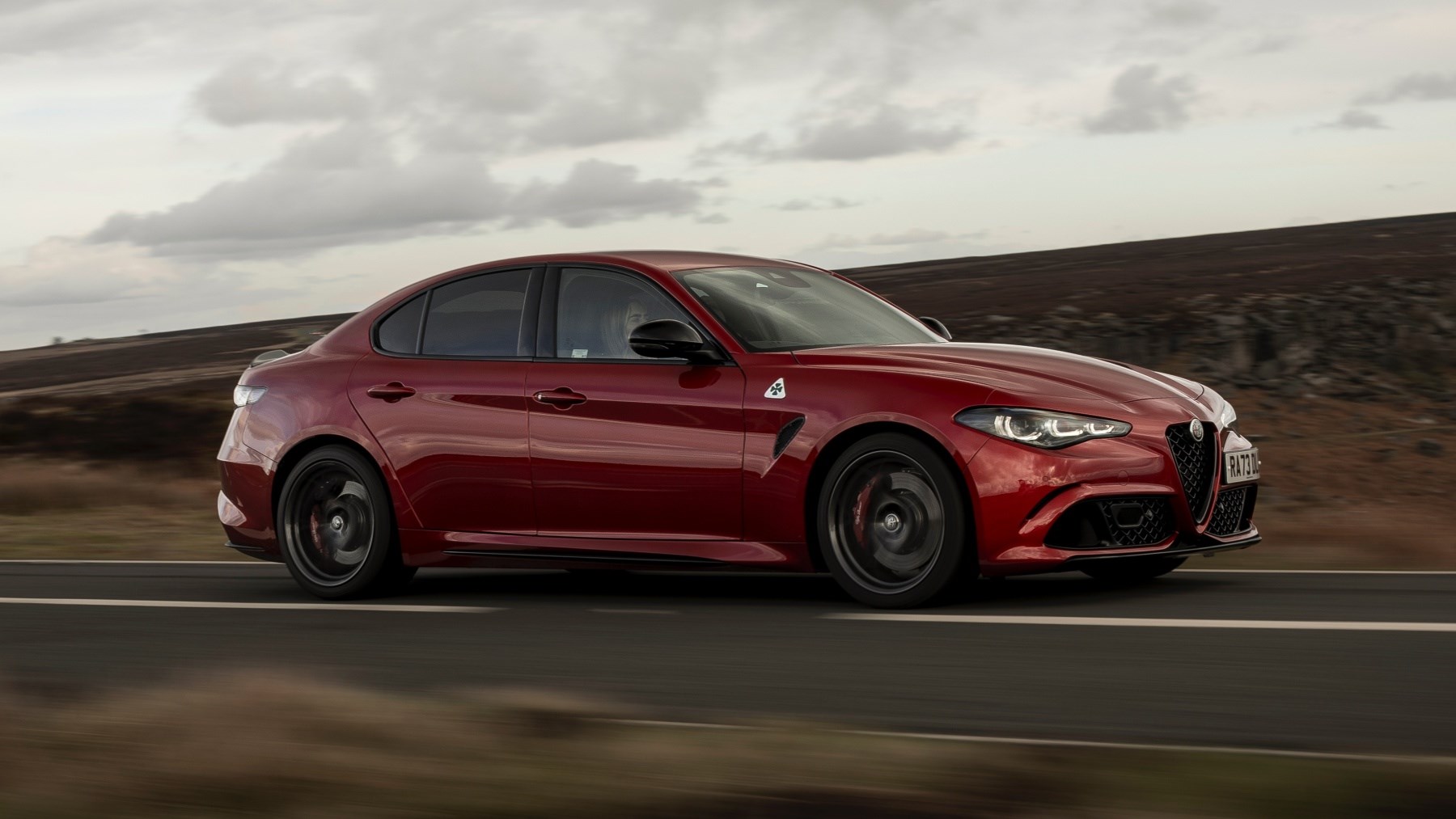
When the Giulia was first revealed, Alfa’s engineers claimed the Maserati V6 used in the Ghibli S would have caused packaging problems and wouldn’t have produced the required power reliably, so lopped a couple of cylinders off the Ferrari V8 to create a very special 2.9-litre V6.
Other markets get a choice of manual or auto, but the cost of engineering the stick-shift to work with right-hand drive wasn’t considered worth the hassle. Don’t lose any sleep over that: it’s pretty clunky anyway, and the excellent ZF auto we do get has eight rather than six gears giving you even more opportunities to chase the redline.
And this is certainly an engine loves to rev. It doesn’t scream exactly through those quad tailpipes, but switch the drive mode selector to the fourth mode, Race (regular Giulias just get the regular Alfa Drive, Natural and Advanced Efficiency settings), and it growls like an Italian union rep asked to work a bank holiday. Alfa says 3.9sec to 62mph and a 191mph top end. Not slow, then.
What’s the handling like?
Really rather excellent and that’s largely down to the fact that the Giulia QV comes in significantly lighter than all of its rivals at just 1660kg. In an age where two-tonne plus performance saloons are commonplace, the Alfa Romeo is positively featherweight – and it shows.
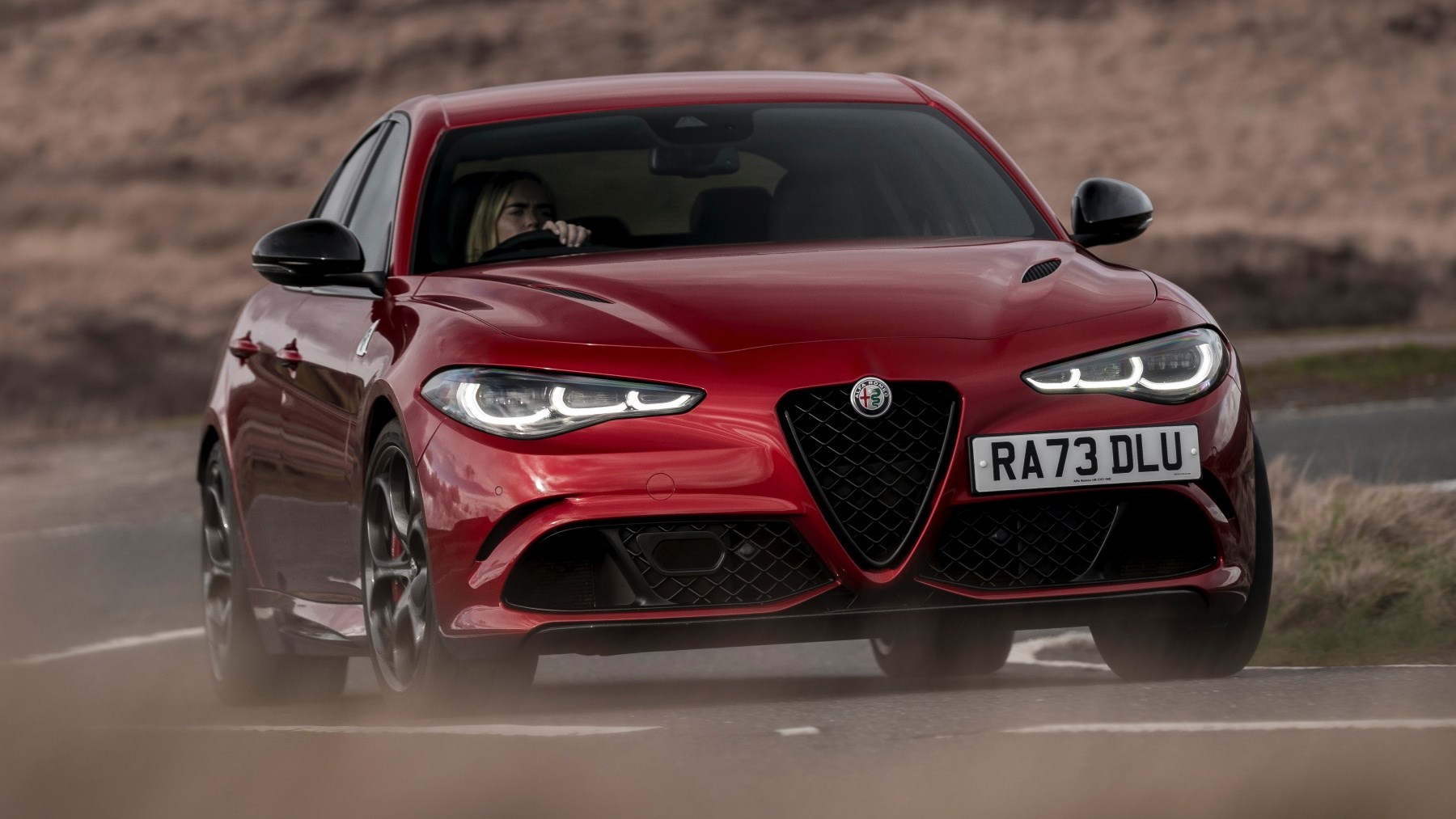
The steering is super quick yet carefully judged so that the rest of the car can cash the cheques the front tyres are writing. Body control is taught, yet the ride is reasonably supple and forgiving, certainly more so than an M3 or C63. It’s the kind of car that flows down your average country road, working with the bumps and cambers of the tarmac rather than trying to flatten them with blunt aggression.
Indeed, post-2023 facelift cars deliver perhaps even greater body control as well as a superior feel of agility that manifests in a more natural manner than its closest rivals. The optional carbon brakes do let the side down, however. We’ve no complaints about the stopping power, yet the feel and modulation is a long way short of what the rest of the car promises.
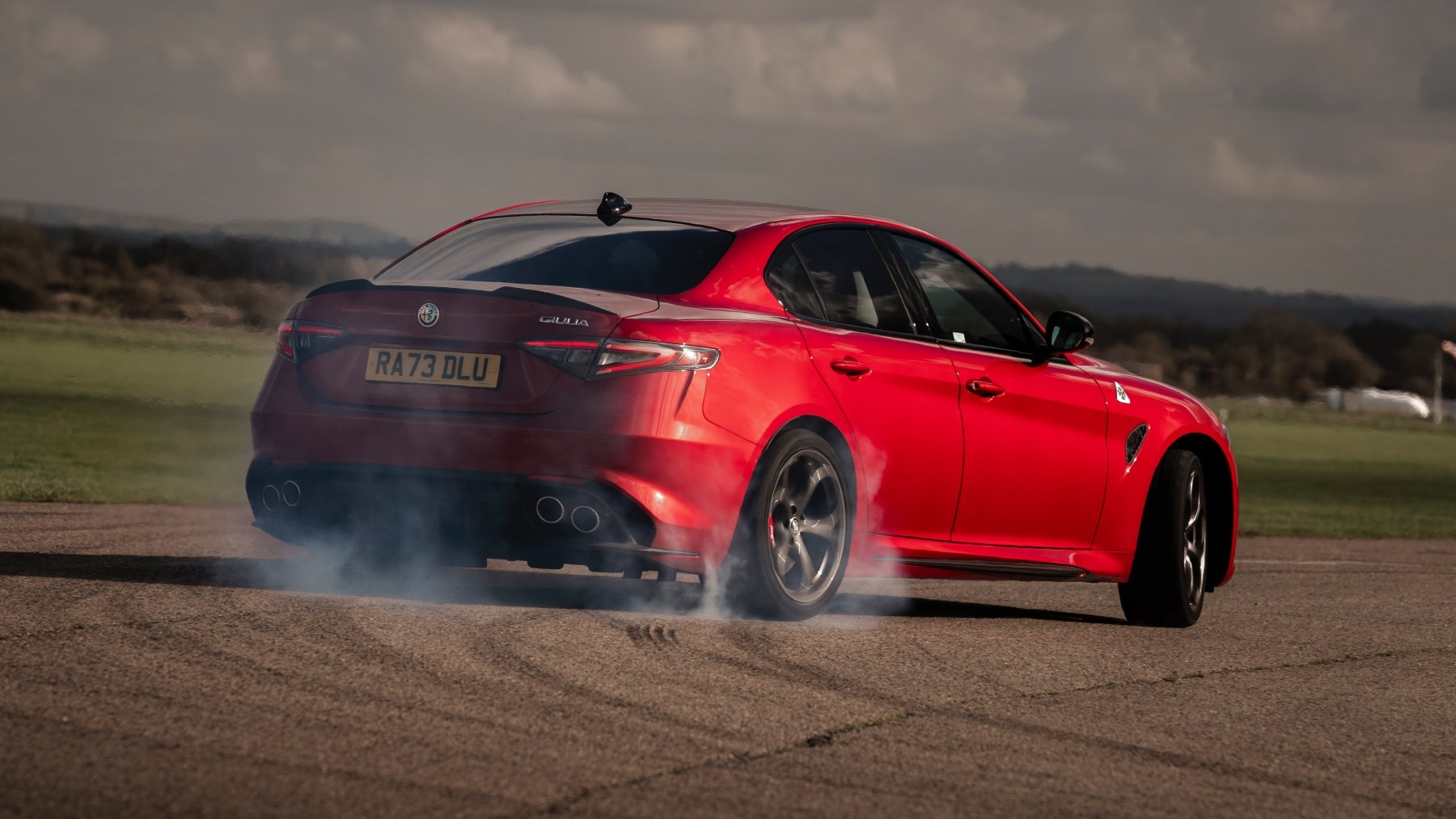
One thing that is worth highlighting is the difference between the electronic locking differential and the mechanical LSD – the latter fitted to post-2023 facelift examples. The former was known for sometimes being snappy on the limit and not delivering entirely consistent traction on corner exit. Put simply, you didn’t know if it was going to hook up and fire you out of the corner, or let the horse spin away via the inside rear wheel.
Thankfully, Alfa Romeo’s decision to take a drastic approach to fixing the issue seems to have worked. With the mechanical diff, the Giulia Quadrifoglio is less spiky and easier to send into a moderate slide, while the regaining of traction on corner exit feels more predictable. It’s not the lairiest setup, but it does keep the back end of the car more tied down and elastic to the driver’s inputs. It’s also a lot more predictable if you do decide it’s tyre roasting time.
And the cabin?
Despite the upgraded digital instrument cluster, the Giulia Quadrifoglio’s interior is much the same as it was when the car launched way back in 2016. That means you’ve got a comparatively small infotainment screen with less than average functionality, fuzzy graphics and laggy responses. It does have a nice physical rotary dial to control it however, while the climate control is also adjusted using chunky knobs on the centre console.
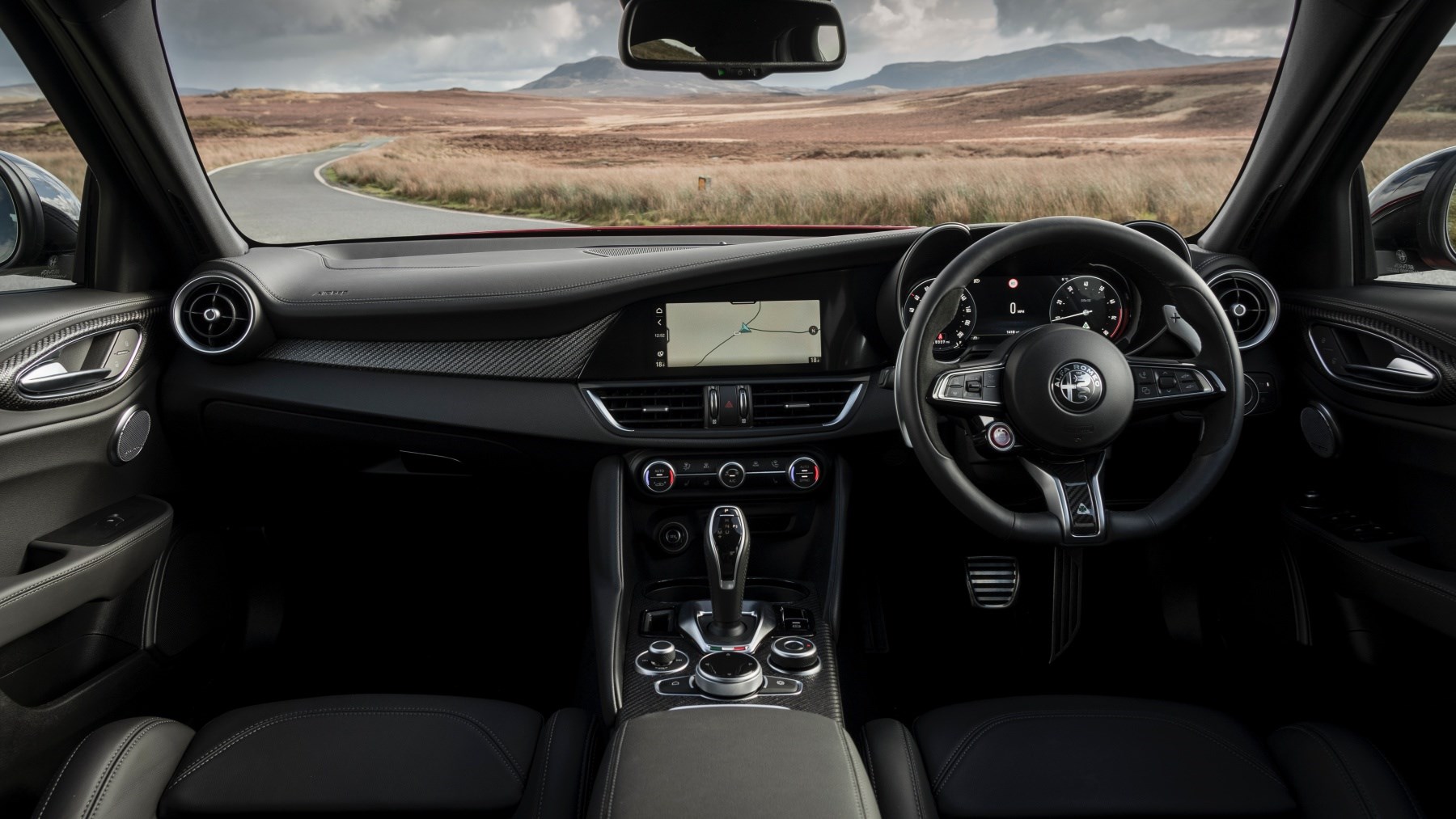
The driving position meanwhile is spot on, plus outright space isn’t bad for a car with such a sleek profile. Tech fans will no doubt prefer the more up-to-date BMW M3, but the Giulia QV doesn’t totally disgrace itself despite its advancing years.
Verdict
It’s not getting any younger, but the Giulia Quadrifoglio is still an incredibly desirable performance saloon with the kind of delicate handling characteristics that its heavier German rivals struggle to match.
The 2.9-litre V6 engine also continues to impress, while its looks are as eye-catching as the day it first rolled out of the factory. For some, its dated interior will be an unfortunate turn-off yet for those looking for a fabulous driving experience in something a little different from the rest the Giulia QV takes some beating.